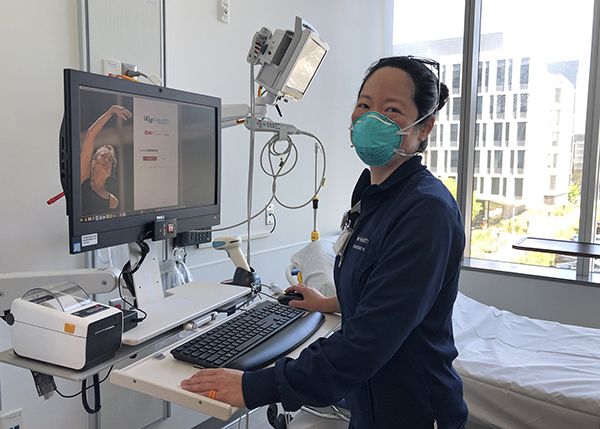The Role of Clinical Research Nurses at UCSF Radiology

Each May, we recognize the many contributions that nurses make to society. Here at UCSF Radiology, nurses play an important role in both patient care and clinical research. We interviewed Kimberly Okamoto, RN, a clinical research nurse, about the variety of roles research nurses play overall and here at UCSF as well as what she enjoys most about being a clinical research nurse.
What is a clinical research nurse?
Clinical research nurses can fulfill a variety of roles including managing research centers, developing protocols, and coordinating studies. However, the most crucial role the research nurse plays is providing nursing care for research patients and volunteers. Studies often involve specialized nursing care that caters to specific research protocol guidelines developed by investigators to ensure both patient safety and study integrity. Our nurses are trained on standard of care procedures and protocols as well as clinical research regulations and individual study protocols. This training gives them the opportunity to provide a unique perspective and vital skillset within the research community.
Describe some of the work done by research nurses at UCSF Radiology
Our radiology research nurses support studies both within radiology and studies across UCSF that use our research scanners and radiology services including those facilities utilizing novel therapeutic and imaging agents. This support includes patient education, informed consent, PIVs/port access, vital signs, ECGs, sample collections, physical exams, neurological assessments, AE assessments, setting-up patients for imaging scans and follow-up calls. We also provide patient safety guidance during protocol development and implementation as well as facilitate communication with the medical center and other research groups at UCSF.
What do you like about being a research nurse?
One of the most enjoyable aspects of this position has been the ability to follow patients throughout their journey at UCSF. Many of our studies involve scans at regular time points over the course of months or even years which has allowed me to develop wonderful relationships with many of our patients. Research visits can last anywhere from an hour up to 8-10 hours, providing us with time to just sit and talk with patients − a tremendous luxury in the medical field.
I've also enjoyed working with a fantastic team who are dedicated not only providing to the best possible care to patients, but also to pursuing ground-breaking research and advancing new treatments and technologies. I always appreciate the opportunity to talk with researchers about their projects because there's an incredible level of excitement during these conversations and encouragement to think of new ideas and solutions. This enthusiasm from both investigators and patients about our research makes me feel incredibly fortunate and privileged to play small role in these studies.
What is something unexpected that you can share about your role as a research nurse?
When I first started, I was struck by the range of studies we support and the variety of departments we collaborate with. My previous research experience was primarily concentrated within a single department. So, having the opportunity to work with research groups and clinical departments across UCSF has been terrific. I have also been pleasantly surprised by the level of collaboration amongst nursing teams at UCSF. Our team has enjoyed a great relationship with the clinical radiology nursing team thanks to the efforts by all the nurses on both the campus and medical center side.
